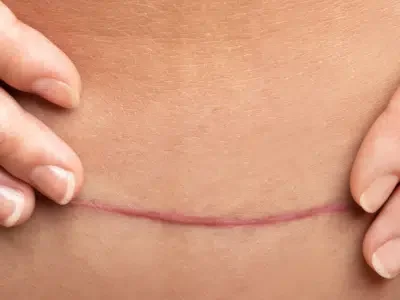Enhancing Recovery with Compression Garments Post-Body Lift Surgery: An In-Depth Guide
Undergoing a body lift surgery is a transformative experience, and the journey towards full recovery is pivotal. An essential component of this recovery process is the use of compression garments. The importance of these garments cannot be overstated, as they play a crucial role in ensuring a successful healing period. If you are considering or have recently undergone a body lift, it’s vital to understand the significance of compression garments in your post-operative care.
RELATED: Benefits of Wearing A Compression Garment After Cosmetic Surgery
Compression garments are specially designed clothing that provide support and apply consistent pressure to the areas treated during a lower body lift. Their primary function is to reduce swelling and support the tissues as they heal. These garments are not just a recommendation; they are an integral part of the recovery process. By wearing them as advised, you can significantly enhance your comfort and the overall outcome of the surgery.
RELATED: Body Lift Surgery FAQs
The role of compression garments extends beyond simple physical support. They also help contour the body by ensuring that the skin and tissues adhere to their new contours post-surgery. This adherence is crucial for achieving the aesthetic goals of a body lift. Additionally, compression garments can reduce the risk of fluid accumulation, known as seroma, which is a common post-operative concern.
At Centre for Surgery, we understand the intricacies involved in body lift surgeries and the recovery phase. Our experienced plastic surgeons are well-versed in various body contouring procedures, including body lifts. They emphasise the importance of post-operative care, in which compression garments play a pivotal role. Wearing these garments as directed by your surgeon can lead to a more comfortable, secure, and effective healing process, ultimately contributing to the success of your body lift surgery.
RELATED: Body Lift Surgery After Massive Weight Loss – What to Expect
Maximising Healing and Comfort: The Advantages of Compression Garments After Body Lift Surgery
Undergoing a body lift surgery is a significant step in one’s aesthetic journey, leading to a period of recovery that requires special care and attention. This phase is critical for not only the final results but also for your overall well-being. In this context, compression garments emerge as a vital tool, designed to support and accelerate the healing process.
RELATED: Upper Body Lift
Essential Role of Compression Garments in Enhancing Recovery After Body Lift Surgery
Post-operative care following a body lift surgery is critical and significantly influences the healing process and the final outcome. In this vital recovery phase, the importance of compression garments cannot be overstated. These specially designed garments serve multiple functions, each contributing to a safer, more comfortable, and more efficient healing process.
Ensuring Security and Reducing Complications at Surgical Sites
Compression garments provide a snug, supportive embrace to your body, crucial for keeping surgical areas secure. This support plays a key role in mitigating several post-operative risks:
- Infection Prevention: Compression garments reduce the risk of external contaminants infecting the wounds by acting as a barrier, safeguarding against infections.
- Minimising Fluid Build-up: They are instrumental in decreasing the likelihood of fluid accumulation, a common post-surgery issue that can cause discomfort and extend the recovery duration.
- Scar Healing: Consistent use of these garments can also influence scar appearance. Maintaining a tight fit over the skin encourages proper healing, potentially leading to less noticeable scarring.
Facilitating Improved Blood Circulation for Quicker Healing
The role of compression garments in enhancing blood circulation is paramount:
- Swift Reduction in Swelling: Improved circulation aids in faster reduction of swelling, a common aftermath of body lift surgeries.
- Accelerated Recovery: Enhanced blood flow ensures that essential nutrients and oxygen are effectively delivered to the healing areas, thus speeding up the recovery process.
- Comfort Enhancement: Better circulation also helps in alleviating discomfort, contributing to a smoother and more tolerable recovery phase.
Supporting Muscle Recovery and Comfort
After a body lift, your muscles undergo stress and require adequate support:
- Stability to Muscles: Compression garments offer stable support, aiding in confident movement during recovery.
- Reducing Muscle Fatigue: These garments help diminish muscle fatigue, allowing for increased activity and mobility during the day.
- Enhanced Comfort Levels: Compression garments significantly elevate comfort levels by supporting the muscles, which is vital for a positive recovery experience.
Optimising Post-Surgical Recovery: The Role of Compression Garments in Reducing Swelling and Bruising After a Body Lift
Recovery from a body lift surgery involves a natural healing process, where swelling and bruising are common and expected responses. These symptoms indicate that your body is actively repairing itself. During this critical phase, compression garments emerge as an invaluable tool, significantly aiding in managing these post-operative effects.
Uniform Pressure Application for Swelling Reduction
Compression garments are ingeniously designed to provide even pressure across the operated areas, playing a key role in mitigating swelling:
- Consistent Support: They offer a constant, steady hold, crucial for managing the varying degrees of swelling that occur in the initial stages post-surgery.
- Prevention of Fluid Build-up: The consistent pressure exerted by these garments is instrumental in preventing fluid from pooling in the surgical areas, thereby facilitating a smoother and more efficient healing process.
- Comfort and Relief: The even distribution of pressure can also provide a soothing effect on swollen regions, offering much-needed comfort during the initial, often more uncomfortable, phase of healing.
Aiding in Fluid Retention Reduction
Post-surgical fluid retention is a typical occurrence, yet it can be effectively managed with compression garments:
- Encouraging Lymphatic Drainage: These garments promote the flow of lymphatic fluids, significantly reducing fluid retention.
- Seroma Prevention: Regular wear can help prevent seroma, a condition characterized by the accumulation of serous fluid in body cavities.
- Facilitating Faster Recovery: Compression garments facilitate a quicker recovery process by mitigating fluid retention and averting complications related to fluid accumulation.
Minimising Movement to Decrease Bruising
Post-operative bruising can be effectively managed by controlling body movements:
- Stabilising Support: Compression garments provide stable support to the body, helping to limit movements which can reduce the occurrence and severity of bruising.
- Protective Barrier: They act as a safeguard, diminishing the impact and severity of any accidental contact or bumps, thus lessening the extent of bruising.
- Enhancing Healing Process: By reducing bruising, these garments contribute to fewer recovery setbacks, ensuring a more seamless and quicker healing journey.
Enhancing Post-Surgical Body Contouring: The Transformative Role of Compression Garments
After undergoing a body lift surgery, the journey towards achieving the desired body shape involves not just healing, but also effective contouring and shaping. In this aspect, compression garments play an indispensable role. These specially designed garments offer benefits that go beyond essential recovery, contributing significantly to the overall aesthetic results of the surgery.
Facilitating Even Skin Distribution and Smoothness
One of the key benefits of compression garments in the post-surgical phase is their ability to assist in the even distribution of skin across treated areas. This is crucial for several reasons:
- Preventing Lumps and Irregularities: By applying uniform pressure, these garments help in avoiding the formation of lumps or irregularities. This is particularly important in ensuring that the body heals evenly and maintains a natural appearance.
- Achieving a Smoother Skin Appearance: Compression garments play a vital role in enhancing the smoothness of the skin. The consistent pressure they provide helps in reducing swelling and allows the skin to settle smoothly over the newly contoured areas.
Encouraging Adherence to New Contours
Another significant aspect of compression garments in post-body lift care is their role in helping the skin adhere to its new contours. This is essential for several reasons:
- Maintaining Surgical Results: Post-surgery, the body needs to adapt to its new shape. Compression garments ensure that the skin and underlying tissues adhere properly to these new contours, which is vital for maintaining the aesthetic outcomes achieved through surgery.
- Enhancing Overall Contouring Effects: By ensuring that the skin conforms to the new body contours, these garments significantly enhance the overall contouring effect of the body lift procedure.
Selecting the Perfect Compression Garments for Post-Body Lift Surgery Recovery: A Comprehensive Guide
The journey of recovery after a body lift surgery is as crucial as the surgery itself, and the choice of compression garments is a pivotal aspect of this phase. These garments play a significant role in determining the comfort and pace of your healing. Therefore, understanding the nuances of selecting the right compression garments is essential for a smooth and effective recovery.
Evaluating the Material for Optimal Comfort and Functionality
The material of compression garments is not just a matter of comfort but also functionality. The fabric should be chosen with care, keeping several key factors in mind. Firstly, breathability is paramount. A breathable fabric is essential to maintaining skin health, as it allows air circulation, reducing the risk of irritation and rashes. This aspect becomes even more critical if you are in a recovery phase during warmer months or have sensitive skin.
Next, the material’s stretchability is a factor that cannot be overlooked. A fabric with a good stretch ensures that the garment fits snugly around the contours of your body. This is crucial because a garment that is too tight can hinder circulation, while one that is too loose may fail to provide the necessary support to the healing tissues.
Durability is another aspect to consider. Since these garments are to be worn continuously, often for extended periods, selecting a material that can withstand regular wear and tear is important. This ensures that the garment maintains its shape and functionality over time and makes it a cost-effective investment in your recovery journey.
Finding the Right Fit for Enhanced Recovery
Achieving the right fit is perhaps the most critical aspect of selecting a compression garment. A well-fitted garment can make a significant difference in your recovery process. To ensure the best fit, it is advisable to consult with your plastic surgeon. They can provide valuable insights and recommendations based on your specific surgery and body type. Their expertise can guide you in choosing a garment that will offer the optimal compression level to aid in your healing.
It is highly recommended that you try on the garments before purchasing. This trial is essential to check for comfort and the right level of snugness. The fit should be tight enough to provide support but not so tight that it causes discomfort or restricts movement.
Additionally, adjustable features in a garment, such as Velcro closures or zippers, can be extremely beneficial. As your body heals and changes shape during the recovery process, these adjustable features allow you to modify the fit accordingly, ensuring continuous support and comfort.
Mastering the Proper Usage of Compression Garments
Knowing how to wear your compression garments correctly is as crucial as selecting the right one. The way you layer and align these garments can significantly impact their effectiveness. Starting with the most snug-fitting layer ensures that the garment provides maximum support right where it’s needed. Proper alignment is equally important to ensure that the areas that need the most support are adequately covered.
Adhering to the duration for which these garments should be worn, as your plastic surgeon recommends, is vital. Wearing them for too short a period may impede your recovery, while wearing them too long can cause other issues. Following your surgeon’s advice ensures that you get the maximum benefit from your compression garments, aiding in a faster and more comfortable recovery.
Essential Dos and Don’ts for Using Compression Garments
The recovery period after a body lift surgery is a delicate time that demands careful adherence to specific guidelines, especially when it involves the use of compression garments. Being aware of these dos and don’ts can greatly enhance the speed and safety of your recovery process.
The Importance of Consistently Wearing Compression Garments
A crucial aspect of your post-surgery care involves consistently wearing your compression garments. This practice is important for several reasons. Firstly, these garments are designed to maintain constant pressure on the surgical sites, which aids significantly in the healing process. This steady pressure is vital not only for supporting the affected areas but also for ensuring that the body heals in the correct shape, adhering to the new contours created by the surgery.
Furthermore, wearing these garments regularly plays a key role in reducing swelling. Swelling is a natural response to surgery, and controlling it is essential for a comfortable recovery. Compression garments achieve this by encouraging good blood circulation and preventing fluid retention, thus effectively managing swelling. Additionally, the ongoing support they provide to muscles reduces discomfort, making the recovery process smoother and more bearable.
Lastly, the regular use of compression garments can lead to a better final outcome. By aiding the body in healing in the desired shape and minimizing complications like swelling and discomfort, these garments contribute to the overall success of the surgery.
Avoiding the Pitfalls of Wearing Compression Garments Too Tight
While wearing compression garments is crucial, ensuring they are not worn too tightly is equally important. Overly tight compression garments can lead to several issues. One of the primary concerns is the restriction of blood flow. Adequate blood circulation is essential for healing, and garments that are too tight can impede this process, potentially delaying recovery.
Additionally, wearing compression garments that are too tight can increase the risk of nerve compression. This can lead to numbness or other complications, which can be both uncomfortable and detrimental to the healing process. Comfort is key during recovery, and overly tight garments can significantly add to discomfort, making the recovery period more stressful than it needs to be.
Moreover, there’s also the risk of skin issues when wearing garments that are too tight. Skin irritation, chafing, and other related problems can arise, which are not only uncomfortable but can also complicate the healing process. Therefore, it’s crucial to find a balance – the garments should be snug but not so tight that they cause these adverse effects.











